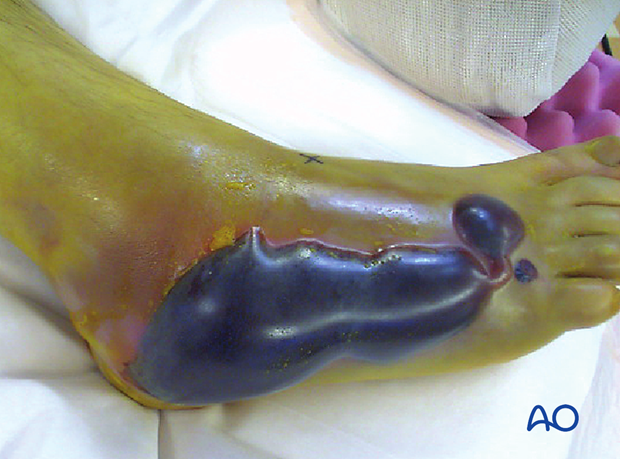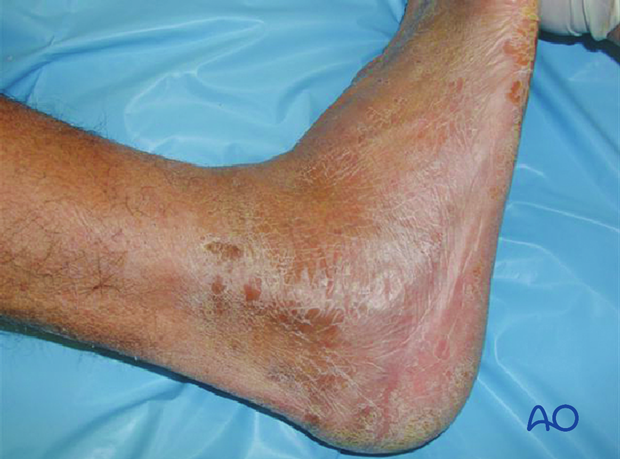Timing of surgery
1. Soft-tissue considerations
The energy delivered to the foot and mid tarsus dissipates not only through the bone, resulting in fractures, but even more so through the soft tissues. Therefore the higher the energy, the more severe the soft-tissue injuries. Thus with these injuries, we not only see swelling and blistering of the skin, but we must remember that compartment syndromes do occur and must not be neglected.

Because of the soft-tissue component of these injuries, surgery is usually delayed to allow soft tissues to settle before definitive surgical care. Soft tissues must be prioritized over the bony injury (assuming all reductions are maintained), and once the “wrinkle sign” is present, indicating relative soft-tissue recovery, the likelihood of soft-tissue complications from bony surgery is decreased.

2. Soft-tissue injury
All severe midfoot trauma has a spectrum of soft-tissue injuries. Rest, elevation, and in some cases, intermittent compression devices will help in resolving the soft-tissue swelling. Non-weight bearing is essential until the final treatment plan has been executed.
The amount of swelling is a good indicator of the degree of soft-tissue injury. As the swelling recedes, the skin begins to wrinkle both on the lateral and medial sides. The wrinkling of the skin is a good indicator of when surgery can be undertaken. Usually, one has to delay surgery for up to 14 days or more to decrease the incidence of postoperative wound complications.
Appropriate bone and joint reduction allow for quicker recovery of the soft tissues. Therefore immediate insertion of external fixators, Steinmann pins, or K-wires on the medial and lateral sides creates a temporary reduction of both the medial and lateral rays. It provides stability for the skeletal component of the injury and prevents further bony and soft-tissue injury. Stability usually decreases pain, but if the degree of pain escalates after the temporary reduction, one must think of a compartment syndrome. Elevation of the leg, compression, and icing will help decrease the swelling.
Severe soft-tissue injury, vascular injury, or both, may necessitate immediate amputation at the appropriate level.
3. Open fractures
These injuries are surgical emergencies. They require urgent debridement and reduction and stabilization of the bony or articular component of the injury. Whether one carries out only external fixation or a definitive ORIF will depend on the nature of the injury. Articular components, if possible, are best dealt with definitively at the time of the initial reduction and fixation. Because most injuries to the tarsus involve articular surfaces, immediate fixation may become necessary.
For provisional fixation here, as in other injuries, the immediate placement of medial and lateral external fixation stabilizes the columns of the foot and prevents further soft-tissue trauma.
Temporary percutaneous wire fixation is frequently used to hold preliminary reductions while the soft tissues heal before definitive bony reconstruction.












